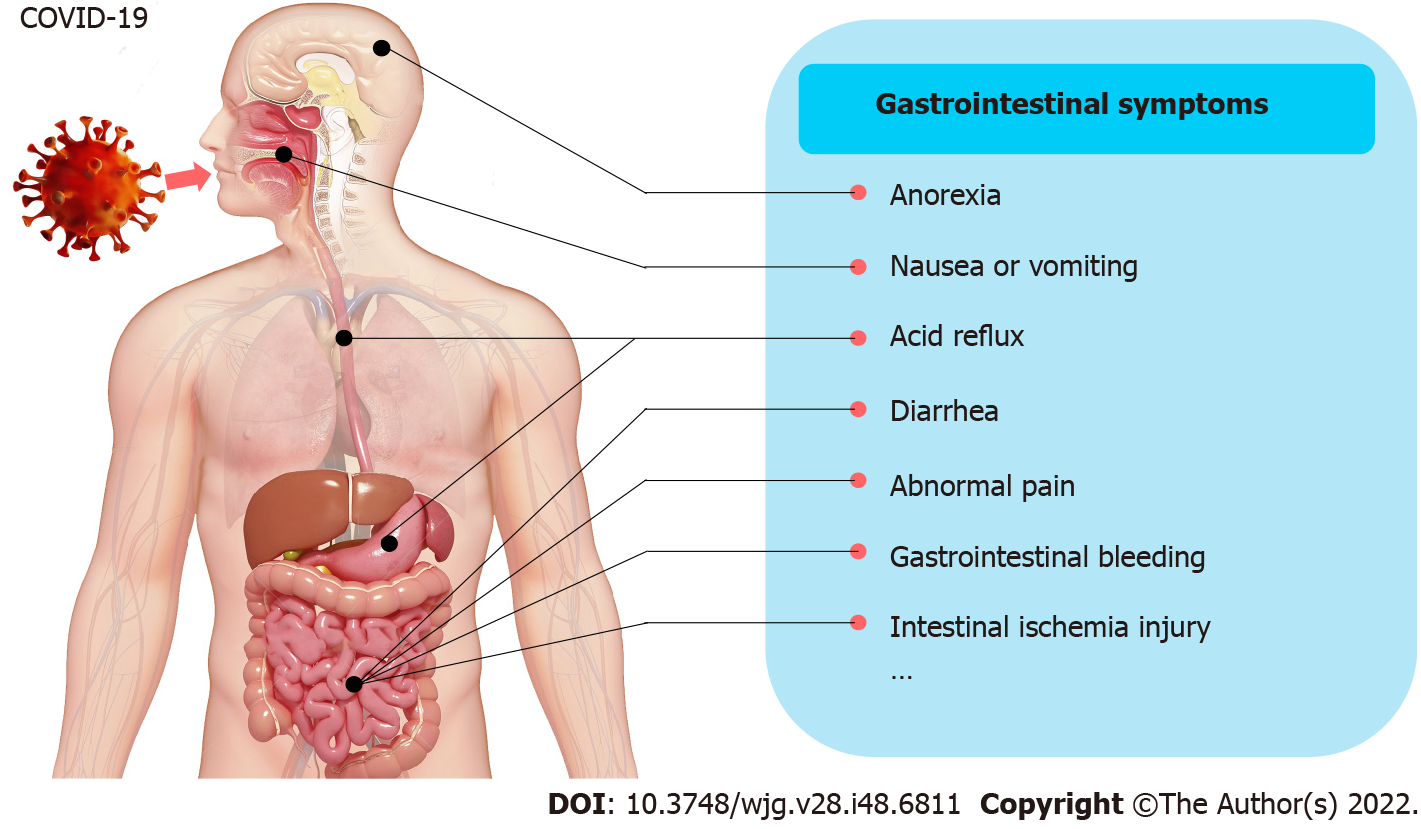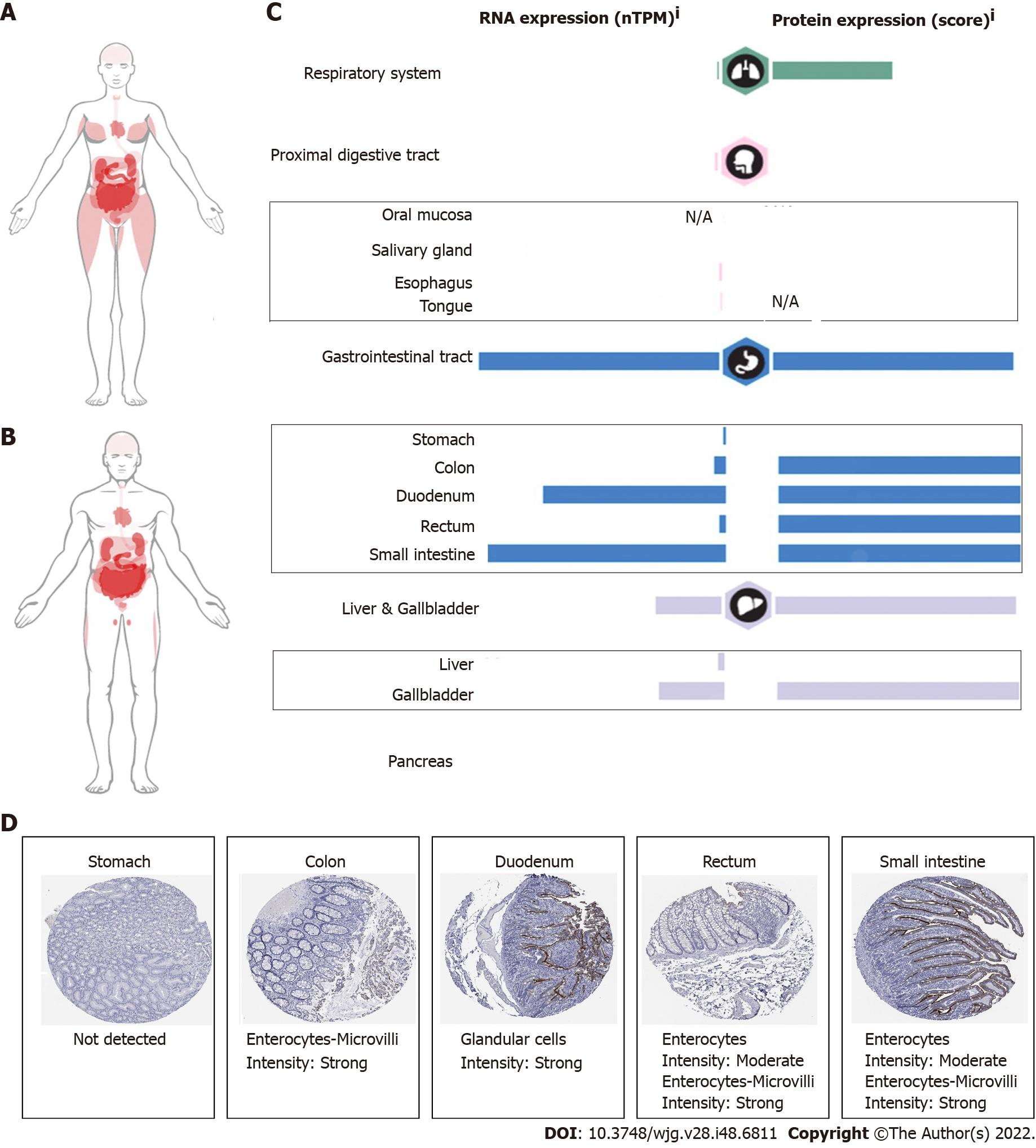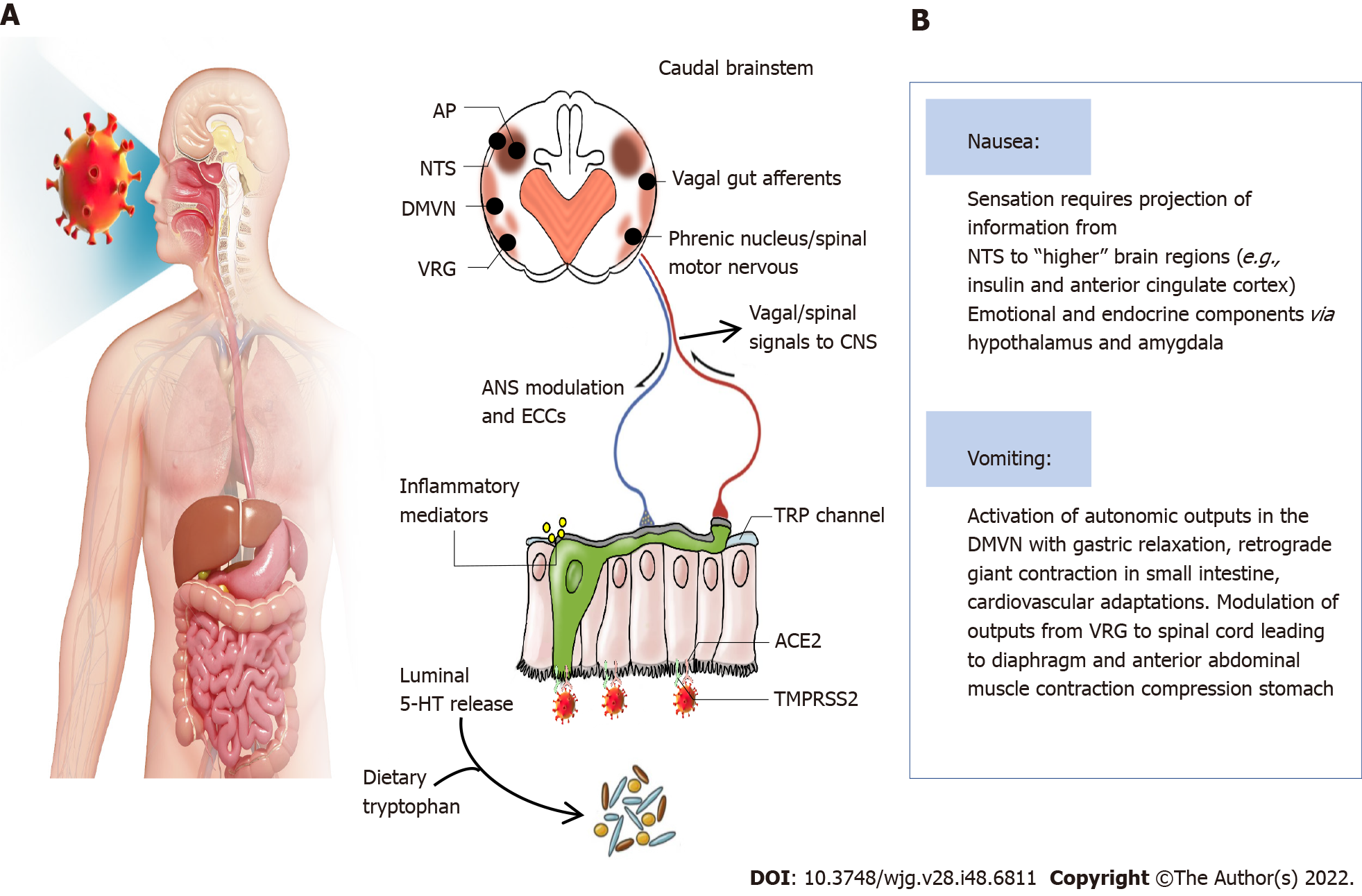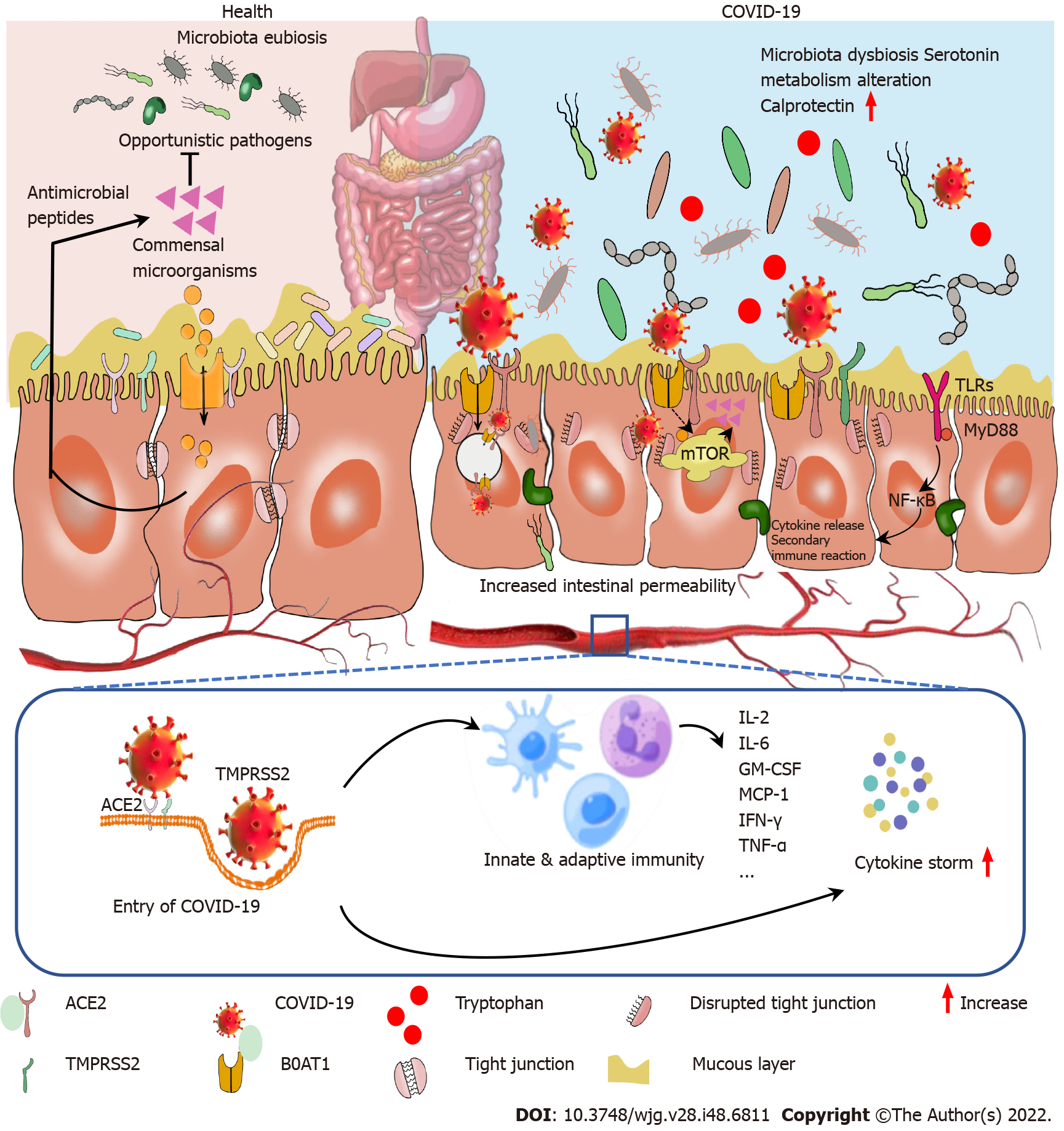Copyright
©The Author(s) 2022.
World J Gastroenterol. Dec 28, 2022; 28(48): 6811-6826
Published online Dec 28, 2022. doi: 10.3748/wjg.v28.i48.6811
Published online Dec 28, 2022. doi: 10.3748/wjg.v28.i48.6811
Figure 1 Gastrointestinal symptoms involved in coronavirus disease 2019 infection.
COVID-19: Coronavirus disease 2019.
Figure 2 Angiotensin-converting enzyme 2 expression in human gastrointestinal tissues.
A: Angiotensin-converting enzyme 2 (ACE) expression in females; B: ACE expression in males, darker colors indicate higher expression levels; C: ACE2 mRNA and protein expression in the respiratory system and digestive system; D: ACE2 positive cell types in the stomach, colon, duodenum, rectum, and small intestine. These data are summarized from the human protein atlas https://www.proteinatlas.org/. N/A: Not applicable.
Figure 3 Main mechanisms involved in coronavirus disease 2019-induced gastrointestinal syndromes.
Gut infection of coronavirus disease 2019 (COVID-19) results in cytokine storm, increased intestinal permeability and alteration of the intestinal flora, and forming a vicious circle, extending the recovery time. Moreover, COVID-19 binding to gastrointestinal angiotensin-converting enzyme 2 also leads to ion imbalance and activation of renin-angiotensin system. Abnormal enteric neurotransmitters may further lead to gut-brain axis communication disorders. RAS: Renin-angiotensin system.
Figure 4 Potential mechanisms for coronavirus disease 2019-induced nausea and vomiting.
A: The virus enters the body through the airways and digestive tract during swallowing and the potential mechanisms for coronavirus disease 2019 to induce nausea and vomiting (based on the evidence discussed in the text). The virus interacts with digestive tract epithelium leading to the release of neuroactive agents from enteroendocrine cells and inflammatory mediations, and these can act by stimulating or sensitizing abdominal vagal afferent terminals; B: The consequences of vagal afferent and area postrema activation induce nausea and vomiting by projection of information to nausea and anorexia-related regions, and vomiting by motor pathways in the ventral brainstem and spinal cord. 5-HT: 5-hydroxytryptamine; ACE2: Angiotensin-converting enzyme-2; AP: Area postrema; DMVN: Dorsal motor vagal nucleus; NTS: Nucleus tractus solitarius; TMPRSS2: Transmembrane protease serine 2; VRG: Ventral respiratory group of neurons; TRP: Transient receptor potential; ANS: Autonomic nervous system; ECCs: Enteroendocrine cells.
Figure 5 Potential mechanism of cytokine storm and secondary pathogen infection resulting in diarrhea in patients with coronavirus disease 2019.
After coronavirus disease 2019 (COVID-19) virus entry into the body, innate and adaptive immunity have been activated, followed by a cytokine storm. Gut microbiota is also disrupted by COVID-19 infection which potentially triggers cytokine storm and secondary pathogen infections. B0AT known as an angiotensin-converting enzyme-2 chaperone, mediates neutral amino acid uptake by luminal epithelial cells. B0AT substrates (tryptophan and glutamine) activate antimicrobial peptide release and promote tight junction formation, inhibit cytokine release and promote mucosal cell autophagy via mechanistic target of rapamycin signaling pathway. COVID-19 infection blocked this pathway, promoting opportunistic pathogen invasion, cytokine storm, activating toll-like receptors/nuclear factor-κB pathway and aggravated COVID-19. COVID-19: Coronavirus disease 2019; ACE2: Angiotensin-converting enzyme-2; TMPRSS2: Transmembrane protease serine 2; IL: Interleukin; GM-CSF: Granulocyte-macrophage colony-stimulating factor; MCP-1: Monocyte chemoattractant protein-1; IFN-γ: Interferon-γ; TNF: Tumor necrosis factor; mTOR: Mechanistic target of rapamycin; TLRs: Toll-like receptors; NF-κB: Nuclear factor-κB.
- Citation: Yao Y, Liu ZJ, Zhang YK, Sun HJ. Mechanism and potential treatments for gastrointestinal dysfunction in patients with COVID-19. World J Gastroenterol 2022; 28(48): 6811-6826
- URL: https://www.wjgnet.com/1007-9327/full/v28/i48/6811.htm
- DOI: https://dx.doi.org/10.3748/wjg.v28.i48.6811













